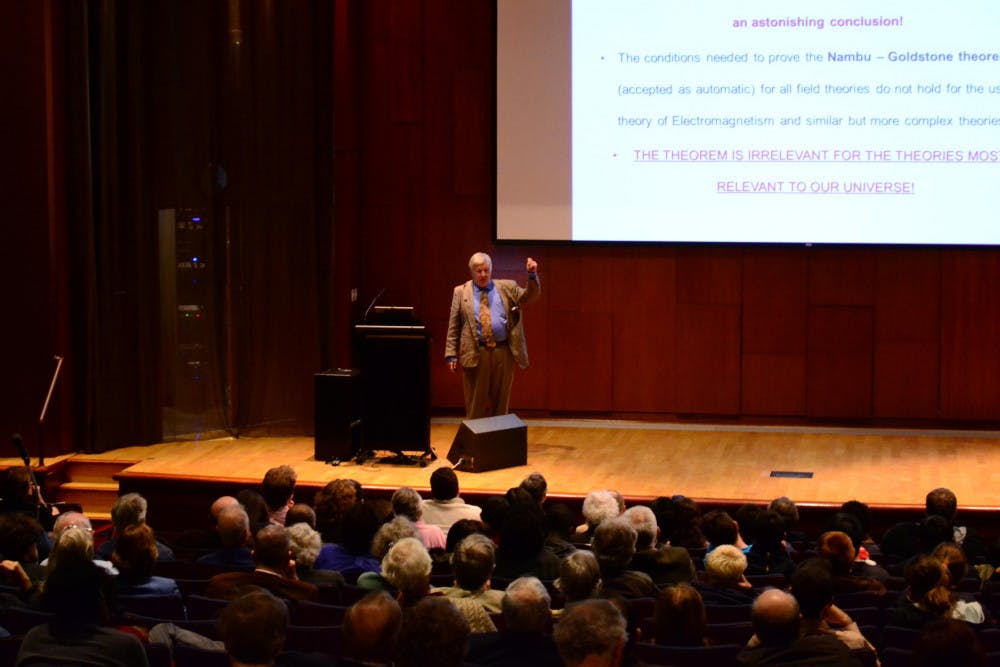Triggered by this July's discovery of a Higgs boson-like particle, five University professors provided insight into their involvement in one of particle physics' most momentous achievements during the "Discovery of a Higgs boson" event Tuesday night. Students, faculty and members of the public filled Salomon 101 for the event, which was hosted by the physics department and included opening remarks from President Christina Paxson.
Physicists at the European Organization for Nuclear Research (CERN) announced July 4 that they had found evidence strongly suggesting the existence of the Higgs boson, a hypothetical particle that would explain how fundamental particles like quarks and leptons obtain mass. Such a discovery would unify the Standard Model of particle physics, which explains how the basic forces and particles of the universe fit together.
"Big science is just that - it's big," Paxson said in her opening remarks. "It requires the collected efforts of a large amount of people."
Paxson said the recent discovery of the Higgs-like particle taught her about both the nature of science and the Brown community. She stressed the value of supporting long-term research without immediate payoffs and praised the internationally collaborative effort of the Higgs boson search.
In her July 5 email congratulating the Physics department on the CERN discovery, Paxson asked recipients to forward her thanks to the graduate students and postdoctoral students in the professors' labs. One of the recipients, she said, emailed her back with a "gentle reprimand" that she had not included the undergraduate students working in the professors' labs as well.
The remainder of the evening consisted of presentations from each of the professors involved in the Higgs-like particle's discovery - Gerald Guralnik, Greg Landsberg, David Cutts, Meenakshi Narain and Ulrich Heintz.
Landsberg, who serves as the physics coordinator for CERN, provided historical context for the discovery, tracing the history of the particle from 1964, when it was first postulated, to the modern day.
"This discovery is just the first" of many in the field of particle physics, Landsberg said. He praised his colleagues' roles as taking part in a "great scientific tradition here at Brown."
Guralnik, who was one of the physicists who first predicted the existence of the Higgs boson, discussed his personal work with the particle. He recounted his doctoral work at Harvard trying to find solutions to quantum field theories. Guralnik co-authored one of three 1964 papers postulating the existence of an additional boson that would eventually bear physicist Peter Higgs' name.
Heintz, Narain and Cutts, who were involved in collecting data for the CERN effort, presented further on the nature of the boson itself and some of the experimental challenges in trying to produce the Higgs-like particle. Narain focused in particular on the challenges of building the 17-mile long Large Hadron Collider, the particle accelerator that made it possible to create the Higgs-like particle.
Students were enthusiastic about the presentations. "I still don't understand all the theory behind it, but I understand it better," said Alex Meehan '15, a prospective physics concentrator who was on campus for the live streaming of the original CERN announcement this summer.
"So much of the world's collaborated on this," said Hannah Kolus '15. "It's really amazing how much science seems to bring everyone together."





